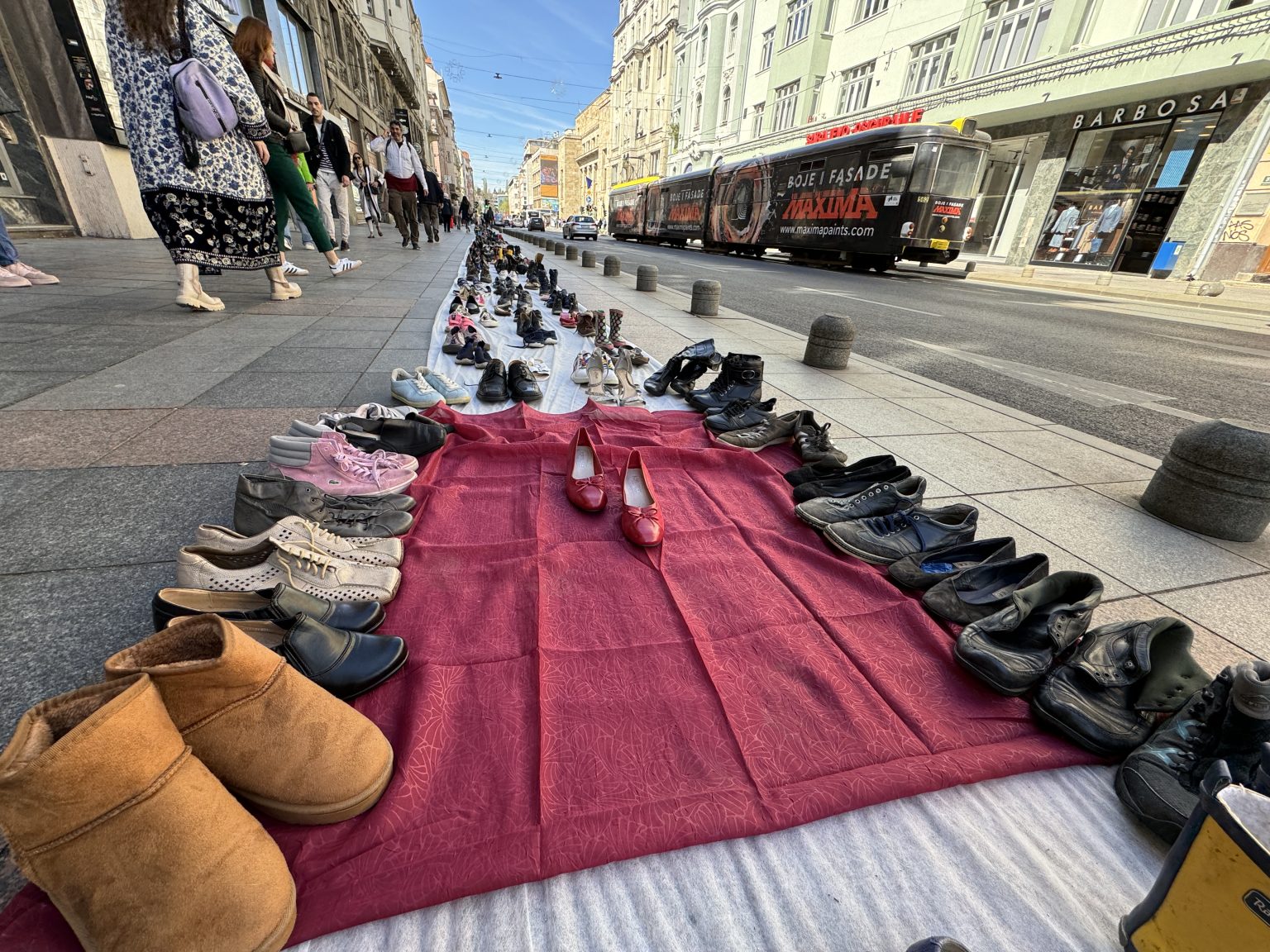People in Sarajevo marked the anniversary of the beginning of the four-year wartime siege of the Bosnian capital by placing 11,451 pairs of shoes on the streets – a pair for each person who died.
Stacked in the rows of three pairs and stretching for almost a kilometre and a half, 11,451 pairs of shoes were placed on the streets of the Bosnian capital Sarajevo on Friday, commemorating the beginning of the siege of the city on April 5, 1992.
The installation is part of a project called ‘Path of Remembrance’, organised by the Sarajevo Memorial Center in cooperation with the City of Sarajevo, which aims to pay tribute to the 11,451 civilian victims of the Sarajevo siege, of whom 1,601 were children.

The line of shoes started at the Square of Children of Sarajevo. Photo: BIRN/Azem Kurtic.
“In addition to paying tribute to those killed, with the ‘Path of Memory’ project we want to point out the importance of the heroic fight in the defence of the capital, the miracle of the Bosnian resistance and the anti-fascist idea and heritage of this city and country,” Ahmed Kulanic, the director of the Sarajevo Memorial Centre, told BIRN.

Photo: BIRN/Azem Kurtic.
During the 1992-95 war in Bosnia and Herzegovina, the Bosnian Serb Army kept Sarajevo under complete siege for 1,425 days, from April 6, 1992 until February 29, 1996 – the longest siege of a capital city in modern history. The city was exposed to almost constant shelling and sniper fire.

Photo: BIRN/Azem Kurtic.
The commander of the Bosnian Serb Army’s Sarajevo-Romanija Corps, Stanislav Galic, was sentenced to life imprisonment for terrorising the citizens of Sarajevo during the siege. His successor as Sarajevo-Romanija Corps commander, Dragomir Milosevic, was jailed for 29 years for similar crimes.
Bosnian Serb military and political leaders Ratko Mladic and Radovan Karadzic were also sentenced to life imprisonment for various wartime atrocities, including the siege of Sarajevo.
The Sarajevo Memorial Centre said that after the completion of the project, the shoes will be permanently preserved as part of the ‘Path of Remembrance’ in the Memorial Forest, which is to be built at Hrasnicki Stan on Mount Igman near Sarajevo.

Photo: BIRN/Azem Kurtic.
Judgments at the International Criminal Tribunal for the Former Yugoslavia in The Hague have established that during the siege, residents of Sarajevo were attacked by snipers and artillery strikes while tending to gardens, shopping at the market and cleaning city streets. They were also shot at during funerals, in ambulances, and on trams, buses and bicycles.



